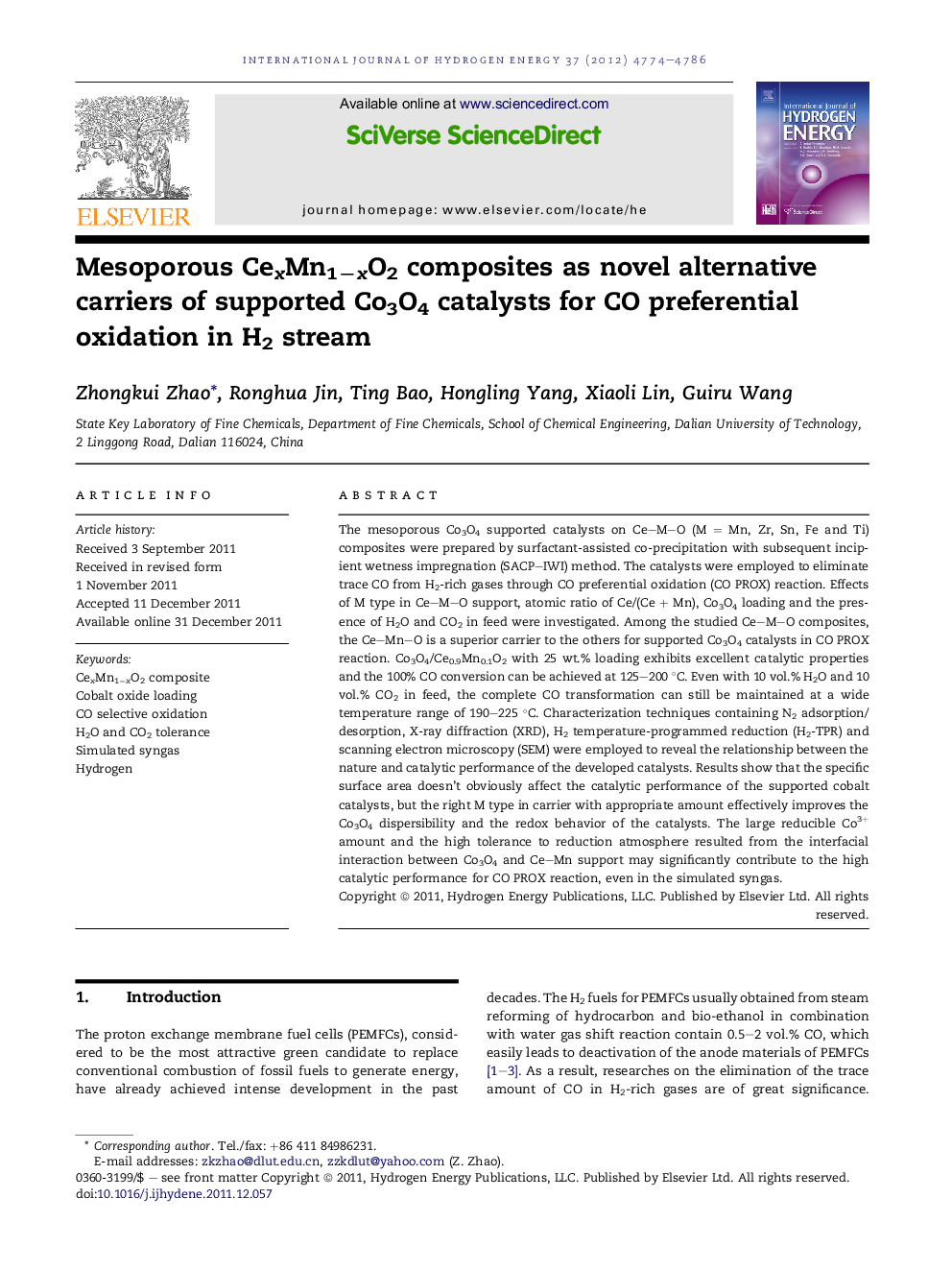| Article ID | Journal | Published Year | Pages | File Type |
|---|---|---|---|---|
| 1271495 | International Journal of Hydrogen Energy | 2012 | 13 Pages |
The mesoporous Co3O4 supported catalysts on Ce–M–O (M = Mn, Zr, Sn, Fe and Ti) composites were prepared by surfactant-assisted co-precipitation with subsequent incipient wetness impregnation (SACP–IWI) method. The catalysts were employed to eliminate trace CO from H2-rich gases through CO preferential oxidation (CO PROX) reaction. Effects of M type in Ce–M–O support, atomic ratio of Ce/(Ce + Mn), Co3O4 loading and the presence of H2O and CO2 in feed were investigated. Among the studied Ce–M–O composites, the Ce–Mn–O is a superior carrier to the others for supported Co3O4 catalysts in CO PROX reaction. Co3O4/Ce0.9Mn0.1O2 with 25 wt.% loading exhibits excellent catalytic properties and the 100% CO conversion can be achieved at 125–200 °C. Even with 10 vol.% H2O and 10 vol.% CO2 in feed, the complete CO transformation can still be maintained at a wide temperature range of 190–225 °C. Characterization techniques containing N2 adsorption/desorption, X-ray diffraction (XRD), H2 temperature-programmed reduction (H2-TPR) and scanning electron microscopy (SEM) were employed to reveal the relationship between the nature and catalytic performance of the developed catalysts. Results show that the specific surface area doesn’t obviously affect the catalytic performance of the supported cobalt catalysts, but the right M type in carrier with appropriate amount effectively improves the Co3O4 dispersibility and the redox behavior of the catalysts. The large reducible Co3+ amount and the high tolerance to reduction atmosphere resulted from the interfacial interaction between Co3O4 and Ce–Mn support may significantly contribute to the high catalytic performance for CO PROX reaction, even in the simulated syngas.
Graphical abstractFigure optionsDownload full-size imageDownload as PowerPoint slideHighlights► Co/Ce–M with various M types shows distinct catalytic properties for CO PROX. ► Ce–Mn–O is a remarkably better support than the others for supported Co catalysts. ► The appropriate Ce/(Ce + Mn) atomic ratio and Co3O4 loading are required. ► The 100% CO removal happens at 190–225 °C over the Co/Ce–Mn in simulated syngas. ► Excellent catalytic activity is due to strong interaction of Ce–Mn and Co-support.
